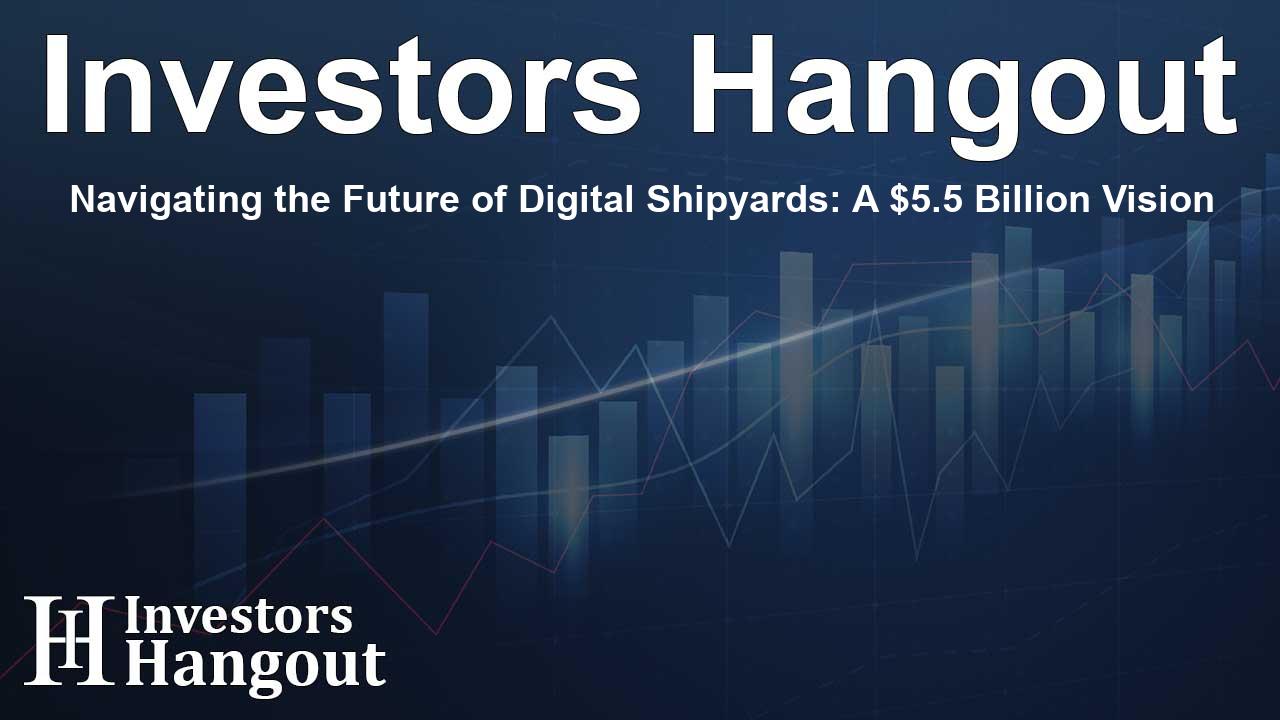Navigating the Future of Digital Shipyards: A $5.5 Billion Vision

The Rise of Digital Shipyards
In the maritime industry, the innovative leap from traditional shipbuilding methods to a digital-first approach is transformative. The Digital Shipyard Market is poised for substantial growth, projected to escalate from USD 1.3 Billion in 2022 to a staggering USD 5.5 Billion by 2030. This remarkable expansion is attributed to a compound annual growth rate of 19.1% during the forecast period. The integration of advanced digital technologies—including digital twins, artificial intelligence, machine learning, IoT, and additive manufacturing—is redefining efficiency and coordination in shipbuilding processes.
Understanding Digital Shipyards
A Digital Shipyard employs state-of-the-art system- and cloud-based solutions to optimize and enhance all processes associated with ship construction, maintenance, and operational support. These integrated systems replace outdated and compartmentalized technology with a cohesive set of tools that provide a single, real-time repository for design data, enhancing accessibility and coordination among various stakeholders involved in shipbuilding.
Key Technologies Driving Change
The integration of digital technologies fosters a level of connectivity and real-time data analysis that was previously impossible. This advancement facilitates smoother operations across design and engineering, manufacturing and planning, maintenance and support, research and development, as well as training and simulations. Enhanced digital transformation not only streamlines shipbuilding but also significantly reduces both time and manufacturing costs, making it increasingly attractive for shipyards to adopt these solutions.
Leading Players in the Digital Shipyard Space
Several key companies are at the forefront of the digital shipyard movement, each contributing uniquely to the landscape of maritime technology.
Siemens: Pioneering Ship Lifecycle Management
Siemens, headquartered in Germany, stands as a leading player in this sector, thanks to its extensive portfolio encompassing all aspects of the ship lifecycle. From concept design through production to optimized service lifecycle management, Siemens' comprehensive software and services support sustainability initiatives and modern hydrodynamic innovations. As it embraces technological advancements, Siemens aims to broaden its offerings, thereby strengthening its position in the market.
Dassault Systèmes: Transforming Ship Design and Engineering
Dassault Systèmes from France is renowned for providing enhanced three-dimensional experiences across various industries, particularly in shipbuilding. It offers a robust business platform that ensures continuity from initial ideas to operational vessels. Their leadership in the digital shipyard market is bolstered by their strategic acquisitions aimed at amplifying their capabilities in design, engineering, and simulation. By fostering partnerships globally, Dassault Systèmes is focused on enhancing technological provisions necessary for advancing shipyard digitalization.
SAP: Driving Digital Integrity
SAP, a German titan in enterprise application software, is another significant player that drives digital integrity through its wealth of solutions aimed at optimizing work environments in the shipbuilding sector. The company is continually enhancing its product portfolio, especially by absorbing smaller software entities specializing in cloud technologies. Its collaborations with formidable players such as Huntington Ingalls Industries signify its growing importance in the marine industry.
Accenture: Leading Digital Reinvention
Accenture, an influential professional services organization based in Ireland, is crucial in the digital reinvention movement, advocating for the Shipyard 4.0 initiative. Their investment in innovative software solutions and partnerships with key shipbuilding firms, like Hyundai Heavy Industries, underscores their commitment to promoting advanced technological solutions in shipbuilding.
The Dynamics of the Digital Shipyard Market
Understanding the forces at play within the digital shipyard market is essential for industry stakeholders.
Drivers of Growth
The adoption of Product Lifecycle Management (PLM) solutions stands out as a primary driver for the digital shipyard’s growth. Traditional shipbuilding often relied on outdated data, hampering efficiency and revenue potential. By employing PLM solutions, shipyards can synchronize various processes, leading to increased collaboration and significantly enhanced productivity.
Opportunities for Innovation
Furthermore, emerging technologies like Augmented Reality (AR) are set to revolutionize shipbuilding practices. AR can provide immersive experiences that allow for real-time access to vital information regarding worker conditions and build quality, thus leading to more efficient ship construction.
Challenges Ahead
Despite the numerous advantages of digital transformation, the industry faces considerable challenges, including stringent regulatory frameworks that govern operations and implementations. Stakeholders—including manufacturers, solution providers, and regulatory authorities—must navigate a complex landscape to ensure compliance while driving innovation forward.
Frequently Asked Questions
What is the projected growth of the digital shipyard market?
The digital shipyard market is projected to grow from USD 1.3 billion in 2022 to USD 5.5 billion by 2030.
Which companies are leading in the digital shipyard industry?
Key players include Siemens, Dassault Systèmes, SAP, and Accenture, among others.
How does digital transformation benefit shipbuilding?
Digital transformation streamlines processes, enhances efficiency, and reduces costs throughout the shipbuilding lifecycle.
How is Augmented Reality used in shipbuilding?
Augmented Reality enhances shipbuilding by providing immersive experiences and real-time information for quality checks and worker safety.
What challenges do digital shipyards face?
Digital shipyards encounter challenges such as regulatory compliance, integration of new technologies, and keeping pace with rapidly evolving standards.
About The Author
Contact Kelly Martin privately here. Or send an email with ATTN: Kelly Martin as the subject to contact@investorshangout.com.
About Investors Hangout
Investors Hangout is a leading online stock forum for financial discussion and learning, offering a wide range of free tools and resources. It draws in traders of all levels, who exchange market knowledge, investigate trading tactics, and keep an eye on industry developments in real time. Featuring financial articles, stock message boards, quotes, charts, company profiles, and live news updates. Through cooperative learning and a wealth of informational resources, it helps users from novices creating their first portfolios to experts honing their techniques. Join Investors Hangout today: https://investorshangout.com/
The content of this article is based on factual, publicly available information and does not represent legal, financial, or investment advice. Investors Hangout does not offer financial advice, and the author is not a licensed financial advisor. Consult a qualified advisor before making any financial or investment decisions based on this article. This article should not be considered advice to purchase, sell, or hold any securities or other investments. If any of the material provided here is inaccurate, please contact us for corrections.
